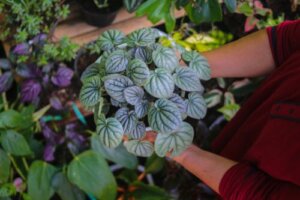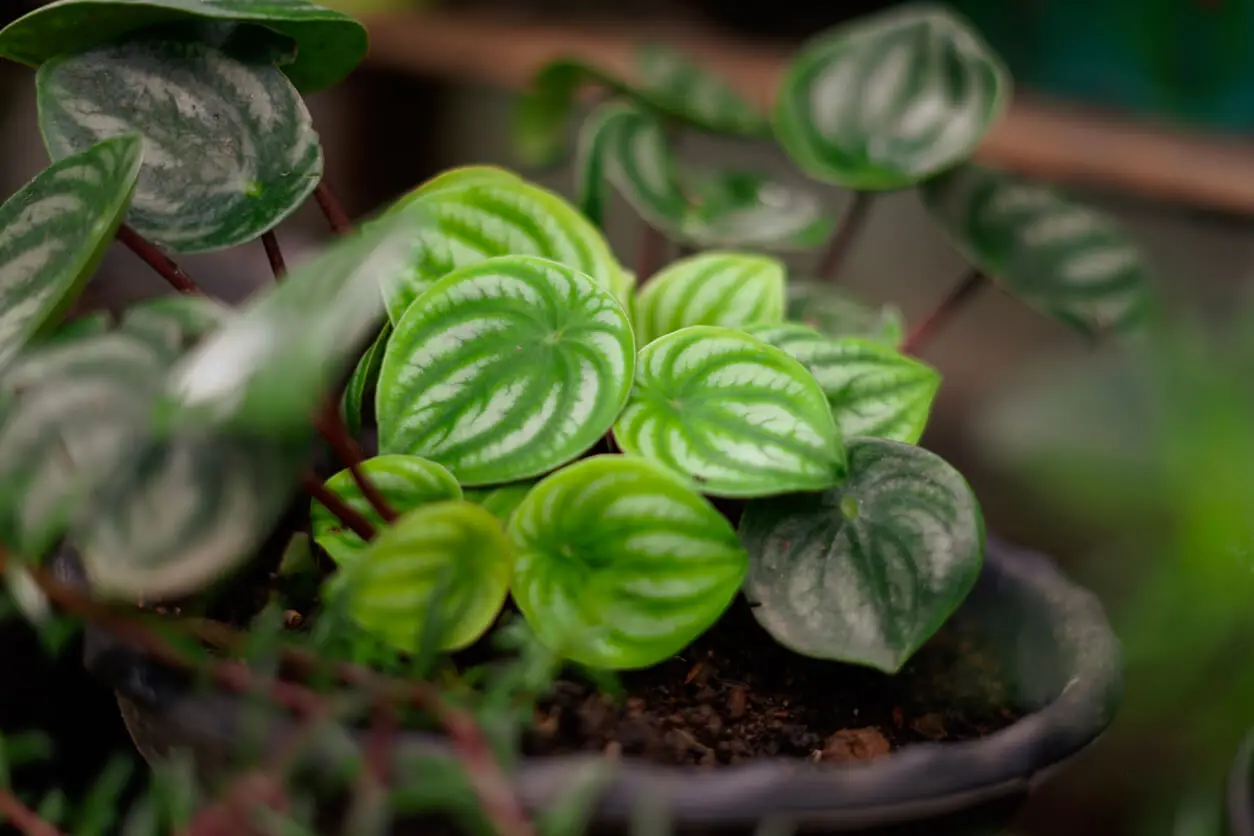The 6 Best Types of Peperomia to Have at Home and How to Care for Them

The peperomia is a versatile plant with an impressive ability to tolerate temperature variations, despite having a certain preference for some conditions. The species belonging to the Piperaceae family is often compared to succulents, due to the fleshy appearance of its leaves.
Inside the house, it’s good to have these plants, as the size lends itself well to putting them on shelves and tables or hanging them and making them look more striking. Outside the home, they can also be planted, but they need a discreet spot with just the right amount of light because too much sun could damage them. Let’s learn more about them.
Peperomia: A standout plant
Peperomias are called “radiant plants” because of their predilection for warm air and light. They are the genus with the second largest number of specimens in the Piperaceae family, with more than 1000 accepted species, mostly in the tropics and subtropics of Central America and northern South America.
They are full of essential oils, so they emanate aromas. Peperomias show off small flowers in pendulous, spike-like spikes or gathered in raised clusters. The fleshiness of its leaves takes center stage because of the floral insignificance.
The plant is slowly growing and captivates by its foliage in different colors and shapes. Contrary to certain species for indoor cultivation, peperomias are not toxic, so you will spare your pets and curious children from any unfortunate incident.
We think you may also enjoy reading this article: How to Grow a Succulent Garden and The Best Plants to Use
How to care for peperomias
Some peperomias adapt easily to any environment, but some only tolerate illuminated interiors and those that demand outdoor light. In any case, consult nurseries or specialized herbariums to find out what type of plant you will take home.
This information is crucial to offer personalized care according to the species.
However, all peperomias respond to a series of basic care tips and these are the ones we expose below:
- A little bit of fertilizer: These products act as fertilizer. Provide them with liquid fertilizer once a month, mainly in the spring-summer season, because this is their growth period.
- Shelter: A minimum of 10 °C is what peperomias demand. They are located in areas with temperatures ranging between 18 °C and 25 °C, distanced from air inlets and with the proviso of protecting them from frost.
- Drained and aerated substrate: The aim is to prevent waterlogging and excessive humidity. As a recommendation, provide substances containing perlite or peat, as these are materials that benefit drainage.
- Disguised lighting: Although they are plants that like light, it is better to keep them away from direct sunlight. They should indirectly receive bright light. But if it is a Piperaceae with very fleshy leaves, then a little more light is permissible.
- Moderate hydration: Do not water until the substrate is sufficiently dry. Too much liquid turns the leaves yellow and tends to rot the roots. There are several watering methods and one of those suggested for these plants is immersion, that is, submerging the pot so that the roots “drink” the water they need.
Like this article? You may also like to read: Smart Pots: See How They Work and the Benefits for Your Plants
The best types of peperomia you can have at home
The range of options is wide when choosing a peperomia. To simplify the decision a little, here are 6 types of this plant that you could grow at home.

1. Hope peperomia
Peperomia tetraphylla Hope is a cross between peperomia quadrifolia and peperomia deppeana. It shows leaves in ovals and, being an epiphyte, can be hung as soon as it exceeds the appropriate size for a table or the ground.
2. Types of peperomia: Caperata
This variety of peperomia, as the University of North Carolina Gardening Extension comments, has almost purple, heart-shaped leaves, with pointed inflorescence in cream tones. It multiplies by cuttings or stem tips, is quite bushy, and is widely decorative.
3. Angulata
The stems of these peperomias are thick and sprout green leaves from which protrude a pair of darker, elongated spots. The height is no more than 35 centimeters. They are sought after for decorating hallways, considering that they show off on tall, narrow tables.
4. Types of peperomia: Prostrata
“Turtle chain” is another nomenclature of the prostrata, since its leaves simulate the shell of this animal. They are of the hanging and vining type, although they also mate with pots in containers or terrariums and like moist soil, but not excessively so, as explained by the University of North Carolina Gardening Extension.

5. Dolabriformis
This is a Peruvian peperomia that is also known as “prayer peperomia.” The leaves are dark green in the center and light in the rest.
They show a small fold towards the top and it is one of those that appreciate a little more natural light. In turn, this plant has benefits associated with calm.
According to a study published by Medicina Naturista, the essential oil of Peperomia dolabriformis, combined with aromatherapy and mindfulness, reduced anxiety and academic stress levels in a group of university students. So, it would be worthwhile to try meditation techniques with an aroma diffuser containing the essence of the prayer peperomia.
6. Types of peperomia: Nivalis
This is one of the smallest peperomias with tiny leaves, perfect to put on your desk. It reaches a maximum of 5 centimeters in height, although its creeping stem could reach 30 centimeters in length. In such a case, the appropriate thing to do is to move it.
How to choose the best peperomia for your home
Knowing that there are several types of these plants, it’s easier to select peperomias by color, texture, and shape. Another key to having the best one at home is to know, before acquiring it, where you will place it.
Although the dimensions of these shrubs are “manageable”, it’s not the same to want a specimen to decorate the desk as to look for one for the central table of the room or a showcase. Therein lies the secret: first, determine the piece of furniture or the space in the house that will house the plant and consider whether that area offers the conditions for its development.
All cited sources were thoroughly reviewed by our team to ensure their quality, reliability, currency, and validity. The bibliography of this article was considered reliable and of academic or scientific accuracy.
- Extensión de jardinería de la Universidad de Carolina del Norte. Peperomia prostrata. https://plants.ces.ncsu.edu/plants/peperomia-prostrata/
- Extensión de jardinería de la Universidad de Carolina del Norte. Peperomia caperata. https://plants.ces.ncsu.edu/plants/peperomia-caperata/
- Soto-Vásquez, M. R., & Alvarado-García, P. A. A. (2018). Efecto del aceite esencial de Peperomia dolabriformis y meditación mindfulness en niveles de ansiedad y estrés académico de estudiantes universitarios. Medicina Naturista, 12(1), 9–14. https://www.mendeley.com/catalogue/0f0ec0e5-83fe-3061-9fdb-3e6da99fb1ac/
This text is provided for informational purposes only and does not replace consultation with a professional. If in doubt, consult your specialist.








